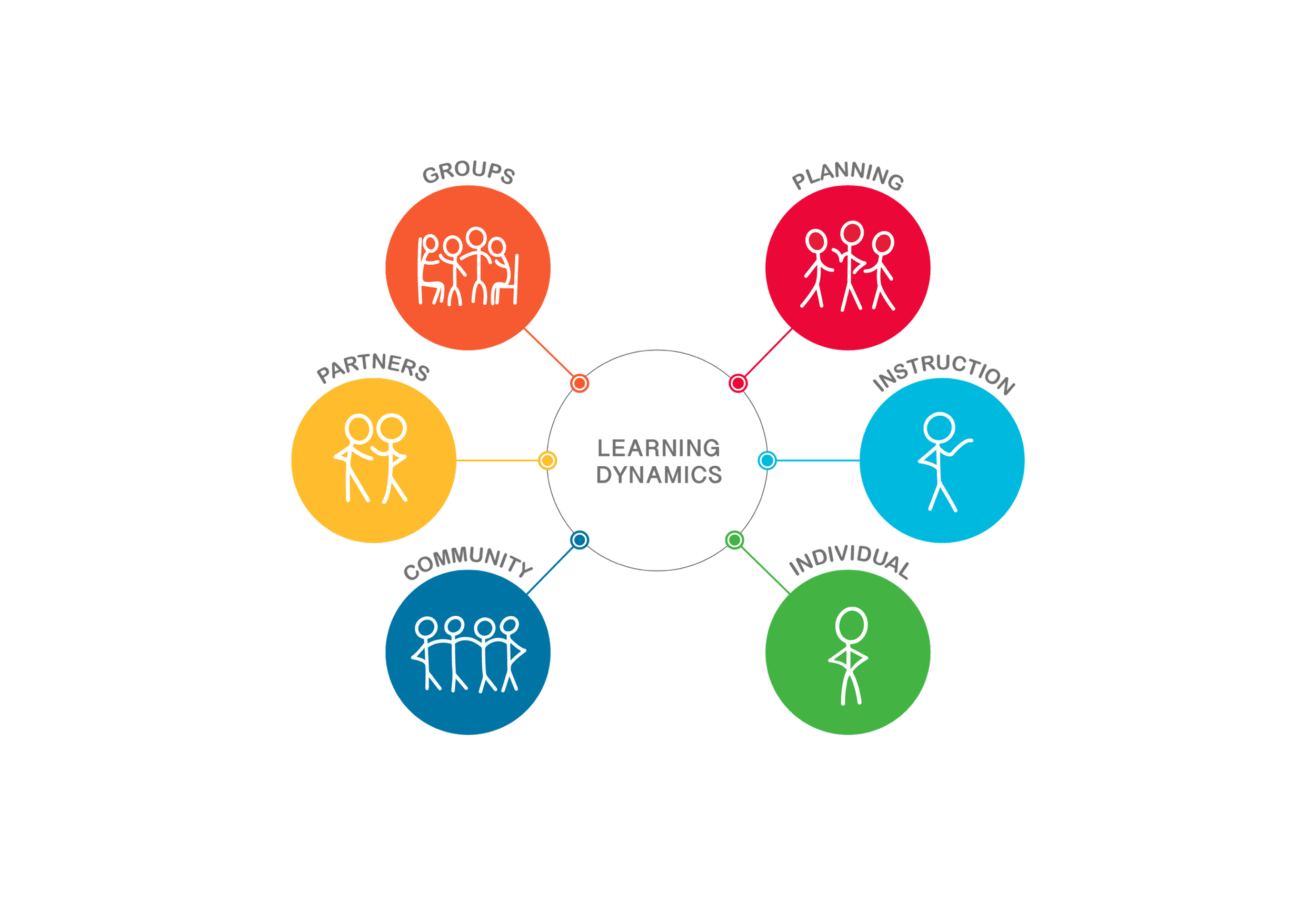Design for Dynamic Learning
Capable Learning Communities
Empowering students to thrive as innovative, collaborative, and contributing learners begins with a strong sense of identify and belonging. By embedding choice, voice, and agency into learning environments, we foster learning communities where positive relationships and shared purpose drive growth.
READ: Empowering Teachers and Students
Includes:
Reflections on what it means to be empowered as a teacher and a student.
Information about how choice, voice, agency, and support are integral to learning design.
Plans for the use of Choice Boards and/or Genius Time.
Tales from the field
Activities to ask students reflective questions about their levels of empowerment at school.
Varied dynamics
Learning happens through connection—with ourselves and with others. Throughout students lives they will find themselves learning as individuals, with partners, in groups and communities, and through shared decision-making. Practicing these dynamic endeavors prepares them to navigate complex social dynamics and succeed in families, communities, and the workplace.
READ: Reimagining Relationships in the Classroom
LOOK: Slides for Reimagining Relationships
Includes:
A brief introduction to the teaching strategies of social agendas, social goals, and active learning.
Specific suggestions for how you can implement social agendas
Ideas to implement social goals as a means to support intrapersonal and interpersonal skill development necessary for students to excel as learners.
Examples of active learning strategies that align with various learning dynamics
Suggestions for integrating these three strategies.


